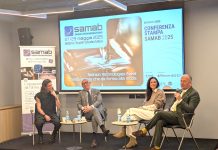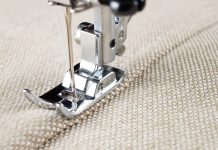RadiciGroup, a relevant Italian and international manufacturer of polyamide, synthetic fibres and performance plastics, teamed up with a group of Italian textile industry companies to create the first spacesuit fully designed and engineered in Italy for the Space Medicine Operations (SMOPS) analogue Mars mission simulation.
This endeavour was promoted and organized by Mars Planet – the Italian chapter of the Mars Society headquartered in the province of Bergamo, in North Italy – under the patronage of the Italian Space Agency.
The SMOPS analogue mission is mainly focused on space medicine: health monitoring of future astronauts and development of support technologies for the simulation of life in space and planet environments.
The spacesuit project
RadiciGroup collaborated with major Italian textile companies, such as Eurojersey, Vagotex and DEFRA, to realize the spacesuit project. The Group supplied the materials to make the suits for the 6 analogue astronauts participating in the mission and coordinated the development of the technologies needed to realize technicalwear for extreme environmental conditions. From 10 to 23 April, the spacesuits have been used in a series of experiments carried out at the Mars Desert Research Station in the state of Utah, USA, that simulated the life and work conditions mission crews will face on the Martian surface.
The team headed by RadiciGroup contributed to the SMOPS mission project by developing and producing three items of technicalwear, featuring high health, comfort and performance standards, to allow the analogue astronauts to move easily and safely outside the base station, with the support of advanced control, monitoring and communication systems.
The undergarment set of the spacesuit consists of a long-sleeve shirt and shorts made with nylon warp-knit Sensitive Fabrics from Eurojersey to ensure comfort and breathability. The shirt is equipped with electrical circuitry and sensors designed to measure the vital signs and geospatial parameters of the astronauts. The sensors can be detached, so that the garment can be washed with no risk of damaging the internal circuitry.
Hence, a comfortable flight suit suitable for use during work activities and capable of supporting the analogue astronaut in an environment simulating the Martian atmosphere. Made lighter by eliminating all superstructure, the suit meets both aesthetic and performance needs; in fact, the double-sided stitching allows for reducing thickness to the minimum and improving mobility and lightness by 30%.
The garment has wearable technology pockets designed for optimal usage of space and volume. Furthermore, it has excellent skin contact properties and is designed for maximum comfort and flexible movement, thanks to the elasticity and high breathability of the materials used (nylon, in particular). The suit is also dustproof, offers UV protection and ensures good thermal resistance. The latter property is achieved through air trapped in the fabric interstices that flows freely inside a 3D alveolar structure, thus providing a self-regulating body temperature system.




